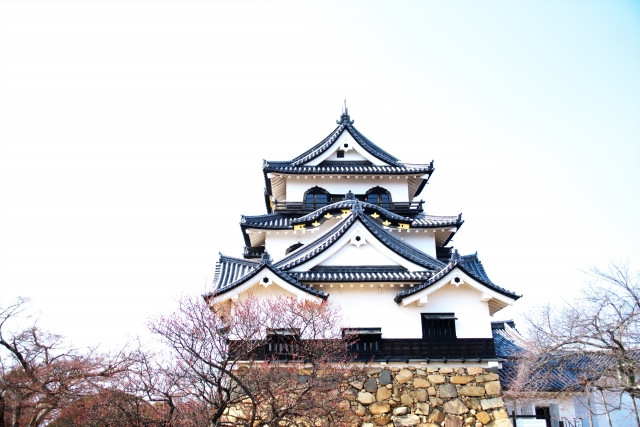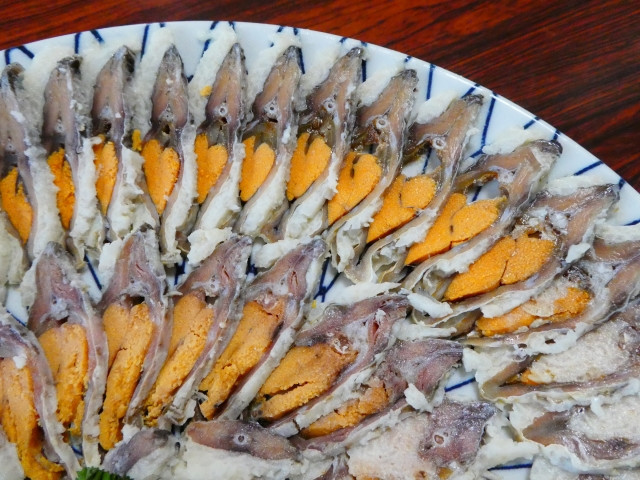Enjoy a day of exploring the treasures of Shiga Prefecture, one of Japan's most popular destinations. This beautiful prefecture has a lot to offer for visitors, including World Heritage sites, ancient castles and temples, colorful festivals, and historic towns. Continue reading to find out the best of Shiga Prefecture.
Table of Contents
Introduction to Shiga Prefecture

Located within the Kansai Region, Shiga Prefecture is a landlocked prefecture. In a clockwise direction starting from the north are the prefectures of Fukui, Gifu, Mie, and lastly Kyoto. Since time immemorial, the prefecture has served as a hub for travelers to rest and is also home to Japan's largest freshwater lake, Lake Biwa that covers ⅙ of the entire prefecture. That’s almost 17%! The whole prefecture consists of thirteen cities with port city Otsu as its capital.
Shiga is a famous tourist destination because of its stunning scenery, unique art galleries, medieval castles, and several National Treasures. Shiga is painted in bright colours all year round, from blooming flowers in spring, greens in summer, crimson in autumn, and white in winter. It also serves several local specialty dishes like Funa-Zushi and Omi Beef. Located only a 20-minute rail ride from Kyoto, it makes for an ideal side trip or stopover when heading back north.
※ Encyclopedia Britannica, “Shiga”
Writer's Pick
Exploring Shiga Prefecture, Best Things To Do

1.Lake Biwa Adventure and Sightseeing
Lake Biwa is the main attraction of Shiga Prefecture. At 670 square kilometres large, it is the biggest freshwater lake in Japan and unsurprisingly full of fun activities on and around it. From waterboarding to surfing, kayaking to cruises, there’s endless fun to be had here.
Water Sports
Adventurous water-loving souls will find no greater joy than splashing in the clean clear waters of Lake Biwa.
If it’s plain old swimming and splashing in the water you want, Omimaiko Beach is the place to go. Pine tree groves border the white sands of this 4 km stretch of freshwater beach. Also a great place to get a suntan going.
For something a little more extreme, head to Friendship Adventures beside Seta River south of Lake Biwa. Enjoy getting wet as you zoom down rivers at high speeds with your friends. Water tubing, river bugging, and water rafting are the extreme watersports you can enjoy here.
With the BSC Watersports Centre, even your kids can join in on the fun. New to water activities? They offer learning courses for yachting and more. Find them west of Lake Biwa on Horai Beach.
※ SHIGA Tourism Official Website, “Swimming & Water Sports”
Torii Gate on Lake Biwa

The essence of Shintoism and one of its most basic beliefs, “being one with nature”, is strongly upheld by this enrapturing view of a vermillion red Shinto Torii placed as if it is floating on the lake’s surface. This image is one of the most beloved and classic representations of the beauty that is Lake Biwa. The backdrop of a sunrise is particularly scenic and extraordinary, well worth getting up early.
※ SHIGA Tourism Official Website, “Shirahige-jinja Shrine”
Camping and Fishing
Camping is a pretty popular outdoor activity in Japan. Lake Biwa is a great spot to camp with excellent lakeside view, cooling breeze, and activities like fishing, barbecuing, and of course much much more. Some of the camping spots around Lake Biwa are:
-
North Lake Biwa
-
South Lake Biwa
-
West Lake Biwa

2.Biwako Valley Aerial View and Winter Skiing
Biwako Valley, operated by Alpina Resorts, is located on West Lake Biwa on the summit of Mt. Horai. The facility operates all year round as an observatory overlooking Lake Biwa, an extreme adventure spot in summers, and a skiing ground in winter.
Get an Aerial View of Lake Biwa
Ride a cable car to the top of Mt. Horai, enjoy panoramic views of Lake Biwa below from Biwako Terrace. Enjoy the view as you make the steady (quite fast actually) climb up the mountain. Cherry blossoms in spring, greenery in summer, autumn foliage in fall, and snow blankets in winter; the beauty of four seasons will be displayed beneath you.
Ropeway Usage Fee:
-
Weekdays: 3,000 yen (Adult Round Trip)
-
Weekend, Public Holiday, Peak Season: 3,500 yen (Adult Round Trip)
※ Biwako Valley, “Hours of Operation & Fares”
Winter Skiing & Snowboarding
In winter when the entire mountaintop is covered in snow, Biwako Valley becomes a skier's paradise. Skiing and snowboarding are available here. For beginners, don’t worry as there are schools providing lessons in English! Do note that the ski lift is charged separately from the ropeway, though you can get a combo package.
For more information including equipment rental price, check the link below.
※ Biwako Valley, “Hours of Operation & Fares”

3.World Heritage Mt. Hiei Enryaku-Ji
Nestled on the border between Kyoto and Shiga lies Mt. Hiei, whose summit holds UNESCO World Heritage Site Enryaku-Ji. Enryaku-Ji is the head temple of Japan’s Tendai Sect. A large spacious temple, it receives plenty of monks for training and religious retreats. The temple grounds can be separated into 3 zones:
-
East Area where the Main Temple, Konpon Chudo Hall stands. This structure was established by the founder of Enyyaku-Ji. It is also a National Treasure of Japan.
-
West Area, this area was set up by the Tendai Sect.’s second leader. The burial spot of the temple’s founder, Jodo-In, can be found here along with Shakado Hall, the area’s main temple.
-
Yokawa Area, created by the Sect.’s third leader, is where most of the monks’ training is held. Its main temple is Yokawa Chu-do. Although this area is easily accessible by shuttle bus, hiking enthusiasts may choose to hike the Tokai Nature Trail which will take around 1.5-hours.
Entrance Fee: 1,000 yen (Adult)
※ Heizian Enryaku-ji Temple ※ Hieizan Biwako Panoramic Route, “Hieizan (Mt. Hiei)” ※ UNESCO, “Historic Monuments of Ancient Kyoto (Kyoto, Uji and Otsu Cities)”
4.Lake Biwa Museum
Lake Biwa Museum is a museum and aquarium combined into one. As its name implies, the museum is focused on Lake Biwa, the pride and joy of Shiga-ken.
How was the lake formed?
What’s its water composition?
Rocks and minerals?
What manner of flora and fauna live in and around it?
You can see all the answers to your questions all around you in one place here.
The museum also covers the history of Lake Biwa, not just history of its nature but its interactions and benefits to Shiga-ken residents through the years. If you think this is going to be a 100% indoor experience, guess again! The museum includes an outdoor terrace for enjoying the view of Lake Biwa and a forest walk. There is also a great spot for bird watching so bring your binoculars!
Entrance Fee: 800 ye (Adult), 450 yen (University Student)
TIP
For residents of Shiga-ken only:
Bring your family on the third Sunday of every month and you can enter for free. Required to show proof of residence (Driving License, Resident Card, Insurance Card, etc. address shown).
※ Lake Biwa Museum
5.Otsu-shuku, Last Stop on Tokaido and Nakasendo
The Old Tokaido Road is a historical trail that connected Edo (previous name for Tokyo) to Kyoto and Osaka during the 16th to 18th century. Altogether there were around 53 post towns. Similar to the Old Tokaido Road is the Nakasendo Trail that has 69 post towns.
In Shiga Prefecture, Otsu-shuku is the last post town on both the Tokaido Road and Nakasendo Trail. It is particularly important, being the last post station before reaching Kyoto. The town itself and its surrounding was always bustling with life and activity. You can still see remnants of Edo period life along what used to be the Tokaido Road. For a better look at the history of this town, visit Otsu City Museum of History.
Access: JR Otsu Station
Museum Entrance Fee: 330 yen (Adult), 240 yen (University Student)
※ SHIGA Tourism Official Website, “Old Tokaido Road” ※ Encyclopedia Britannica, “Tokaido”

6.“Original” Hikone Castle
Built in 1622 and 1 km away from Lake Biwa is Japan National Treasure Hikone Castle. A three stories tall castle with one-of-a-kind traditional architecture, Hikone Castle is invaluable to Japan. It is also one of only 12 ORIGINAL castles in Japan, meaning it has retained its original keep instead of being a complete reconstruction.
For more about Hikone Castle, read our dedicated article that explains its history, significance, garden, and museum:
Hikone Castle: A Unique Japanese Castle in Shiga Prefecture
Entrance Fee for Adult:
-
Museum Only: 500 yen
-
Full Set (Museum, Castle, Garden): 1,200 yen
※ Hikone Castle ※ Hikone Castle Museum

7.Omihachiman Merchant Town
A well preserved historical feudal era merchant town is what awaits you at Omihachiman. Previously a castle town, whose castle has since been destroyed and its lord sentenced to commit seppuku, Omihachiman is located along the Nakasendo Trail connecting Edo to Kyoto. Due to its strategic location, Omihachiman was an important trade town with many merchant stores. Till this day, plenty of the old merchant houses and shops still retain their original look.
Don’t forget to visit Mt. Hachiman nearby. Reach the summit for a grand view of Omihachiman and Lake Biwa. There are also hiking trails on the mountain, a Shinto Shrine, and a Buddhist temple. If you happen to visit Omihachiman in March, look forward to attending the Omihachiman Sagicho Fire Festival.

8.Metasequoia Namiki
Northwest of Biwa Lake is Metasequoia Namiki, a long straight road stretching 2.4KM long bordered by 500 metasequoia trees on both sides. Whether it’s a leisurely drive, walk or cycle down this road, you’re guaranteed to enjoy it. Beautiful all year round, Metasequoia Namiki brings out the best of Japan’s four seasons.
※ Google Maps, “Metasequoia Namiki”

9.Koka Ninja Village
Be a ninja for a day and experience what it takes to be a shadow warrior! Experience the authentic ninja culture and learn about ninja history in Koka Ninja Village at the foothills of Mt. Suzuka. Explore a traditional Ninja house with booby traps and hidden doors, conquer ninja training, practice shuriken throwing, and more! To really get into your role, don a shinobi outfit! Remember to do the Naruto run!
Entrance Fee: 1,100 yen (Adult)
※ Koka Ninja Village

10.Shiga Local Delicacies
Whilst you’re busy visiting all these places, remember to keep your energy up with Shiga local delights. Some of the absolute must-eats are Funa-Zushi (fermented fish sushi), Omi Beef, Lake Biwa fish, Red Konjac, Unagi Nabe, and more .
Takeaway

Tourism in Shiga Prefecture centers around Lake Biwa, unsurprising considering its importance in Shiga-ken. In that case, it only makes sense that your first destination be the lake. Spend several days in Shiga, or make it a quick 1 or 2 days side trip when you drop by Kyoto.






























